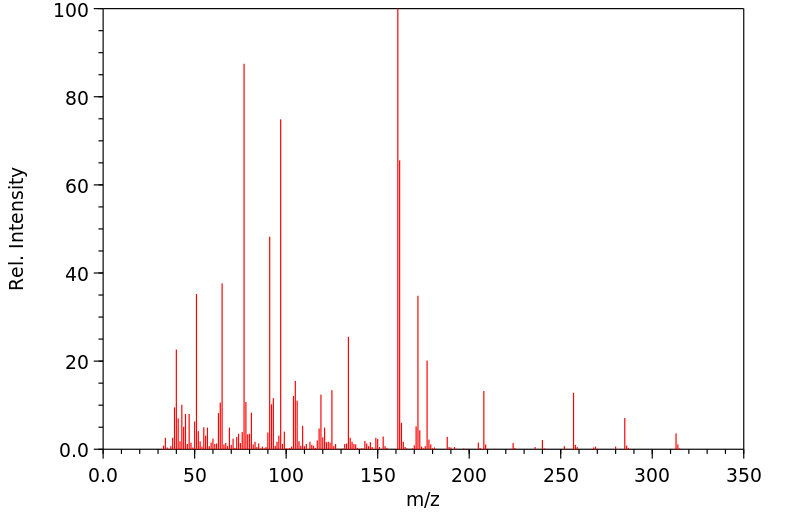代谢
在大鼠中,通过橄榄油管饲给予放射性化合物,剂量为每只大鼠0.56毫克(相当于每天每千克体重3.1-4.3毫克),连续12天。...尿液中的主要代谢物是尿素-14C,占通过此途径排出的放射活性的85%。在尿液中检测到的其他代谢物包括与葡萄糖醛酸结合的(3-14C)1-苯基-1,2,4-三唑-3-醇、(3-14C)1-苯基半碳酰胺和(14C)半碳酰胺,这三种代谢物各占尿液中消除的14C的3-5%。还发现了两种未知代谢物的低浓度。在粪便中,未改变的(14C)三唑磷(占粪便中总活性的40%)和(3-14C)1-苯基-1,2,4-三唑-3-醇(占活性的60%)被确定。...
... In male and female rats intubated with the radioactive compound in olive oil at a dose of 0.56 mg/rat (equivalent to 3.1-4.3 mg/kg bw per day) for 12 consecutive days. ... The main urinary metabolite was urea-14C, representing 85% of the radioactivity excreted by this route. Other metabolites detected in the urine were (3-14C)1-phenyl-1,2,4-triazol-3-ol, (3-14C)1-phenylsemicarbazide and (14C)semicarbazide, all conjugated with glucuronic acid. Each of these three metabolites accounted for 3-5% of the 14C eliminated in urine. Low concentrations of two unidentified metabolites were also found. In the feces, unchanged (14C)triazophos (40% of the total activity in feces) and (3-14C)1-phenyl-1,2,4-triazol-3-ol (60% of the activity) were identified. ...
来源:Hazardous Substances Data Bank (HSDB)







